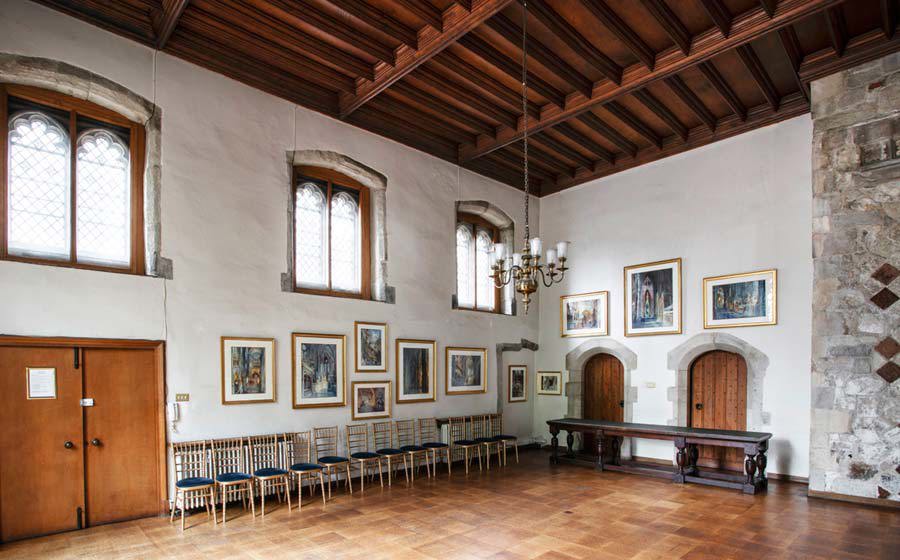Explore our History
Cheyneygates
These are two rooms over the entrance to the cloisters, originally part of Nicholas Litlyngton's rebuilding of the Abbot's house complex in the 14th century. Together with the main Deanery they were gutted by bombing in 1941 and when rebuilt were separate from the main Deanery. They are not open to the public.
History
It is thought the name derives from the French word chene (oak). In 1486 Cheyneygates was leased to Edward IV's queen, Elizabeth Woodville although she only lived there for a few months. She had twice sought Sanctuary at the Abbey (where her son Edward V was born), and later on it was probably from Cheyneygates that she was persuaded to allow her younger son Richard to join his brother in the Tower of London.
Henry VII often dined with Abbot Islip here, and it was in these rooms that Sir Thomas More was kept in custody before his removal to the Tower.
After the Reformation the rooms were used by the Dean. Post war rebuilding was undertaken by the architects Seely & Paget, and Hugh Easton provided stained glass for the hallway. This includes an inscription about the war damage and rebuilding. In a small window is glass which depicts flowers and a ballerina, with the face of Dame Margot Fonteyn, both interests of the wife of Dean Don. The central ceiling boss was carved by Michael Groser. This depicts a device representing man in the hands of God with a Latin inscription, translated as "Thy hands have made and fashioned me". A new staircase was constructed.
The large outer room shows some curious chequer tile work in the south east corner, part of the original exterior wall of the 11th century refectory (uncovered by the bombing). A number of 14th century tiles which survived have been set on the window sills of both rooms. On the oak ceiling are the names of those concerned with the reconstruction of the room.
Recently a number of water colours of views of the Abbey by Alexander Creswell have been hung around the walls.

Cheyneygates outer room with Alexander Creswell water colours on the walls
Now framed on the wall of the entrance hall is a magnificent altar frontal by Harriet Wyatt depicting the Transfiguration of Our Lord, first used in the Abbey in 1905.
Inner room
The inner room may have been the Abbot's private chapel in medieval times. The windows here are filled with 19th century glass made by Burlison & Grylls, salvaged from a war damaged window in the south transept. A portion of 16th century Flemish tapestry hangs on the wall. The bookcases are made from parts of the 1775 choir furnishings.
Carved wooden heads on the roof depict sixteen members of the Dean and Chapter, Abbey staff and masons at the time of the post-war reconstruction plus architects Lord Mottistone (Seely) and Paul Paget and their assistant Mr Melich. The carvings were made by the foreman of the works Mr Markham.
The rooms are used by Abbey staff and for meetings.



